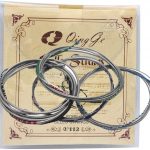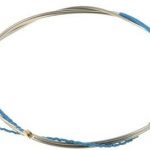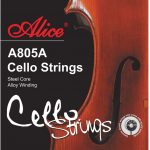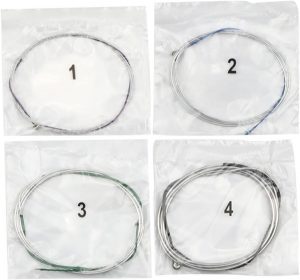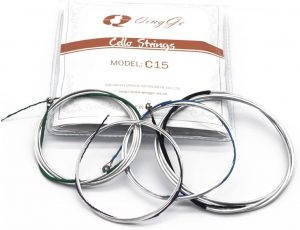How to choose cello strings?
First, you want to understand your skill level. A beginner who is mostly going to be practicing needs a much more durable cello string than a professional. The professional can sacrifice durability for a cello string that is more fine-tuned and produces the highest quality of sound. Let’s do a deep dive into the different features of cello strings.
Features to consider before you buy cello strings
While we did a lot of research, the primary features we considered are string gauge, scale, material, number of strings, quality of the sound, and ease of use. We weighed the pros and cons of all of these features when we ranked each item.
There is no set numerical measure in which one category is more important than the other.
When it comes down to it, a lot of it comes down to individual comfort levels and what your specific needs are.
While we might think you need the top of the line choice in sound quality, you might be willing to sacrifice a touch of quality if it means a more durable string. Your needs might also change over the years, depending on how much you are practicing or performing in a given year.
String gauge
Most are medium gauge, which is the standard size for a cello string. You can find some light or heavy gauges as well, so consider what you are looking for. While a medium gauge string will work for most musicians, it is possible you need something else.
Remember that the thicker and heavier your string is, the slower it will respond, meaning that a beginner might have trouble since the string responds quickly. The lighter the string is, the easier it will be to play, but you might get a poorer sound quality. There is a balance here, and most musicians choose medium-strength since that is a great mix of responsiveness and sound quality.
Scale
While one item on our list, the Full Set by Imelod, is available in four different scales, most options are available in the 4/4 or the 3/4. Once you know what scale is important to your needs, you can fine-tune your search for cello strings to just include the scale or scales that you need.
Material
Our Best Value choice for cello strings, Q QINGGE Cello Strings Full Set, is made from a solid steel core. This makes it one of the most durable choices on our list. It will not rust or corrode, so you will not need to replace it for wear and tear reasons. And, the strings rarely break. Requiring little tuning, you can set up and play on these cello strings until your heart is content.
Number of strings

How many strings do you need? There are some quality items on our list that are sets of just one string, the “A” string. If the “A” string is the only one you need to purchase, consider the Jargar Cello String, which produces a high-quality “A” string. However, if you are looking for a pack of all four strings, A, G, D, and C, consider our Editor’s Choice, D’Addario J1010 Prelude Cello String Set, which is arguably the overall top choice in our product review.
Quality of the sound
Our Premium Pick, Larsen Magnacore Soloist 4/4 Cello String Set, is famous for the quality of sound. Larsen is one of the most well-known manufacturers of cello strings, and this is a high-quality selection. This set of strings responds so well to a musician’s touch that you cannot go wrong with this choice, whether you are a beginner or a professional musician who has been playing for decades.
Ease of use
Some strings are easier to use than others. This matters for beginners. Do you need a string that responds as soon as you touch it? Or, are you more established and know exactly how much pressure to apply to a cello string to get the exact noise you want?
There are different levels of pressure required based on the quality of the cello string, and you should consider that when making your selection.
When it doubt, it is best to start out with an easy to use string. As your skill level improves, so will your ear for sound quality, and you can eventually get a new string that is more difficult to use but sounds better.



















